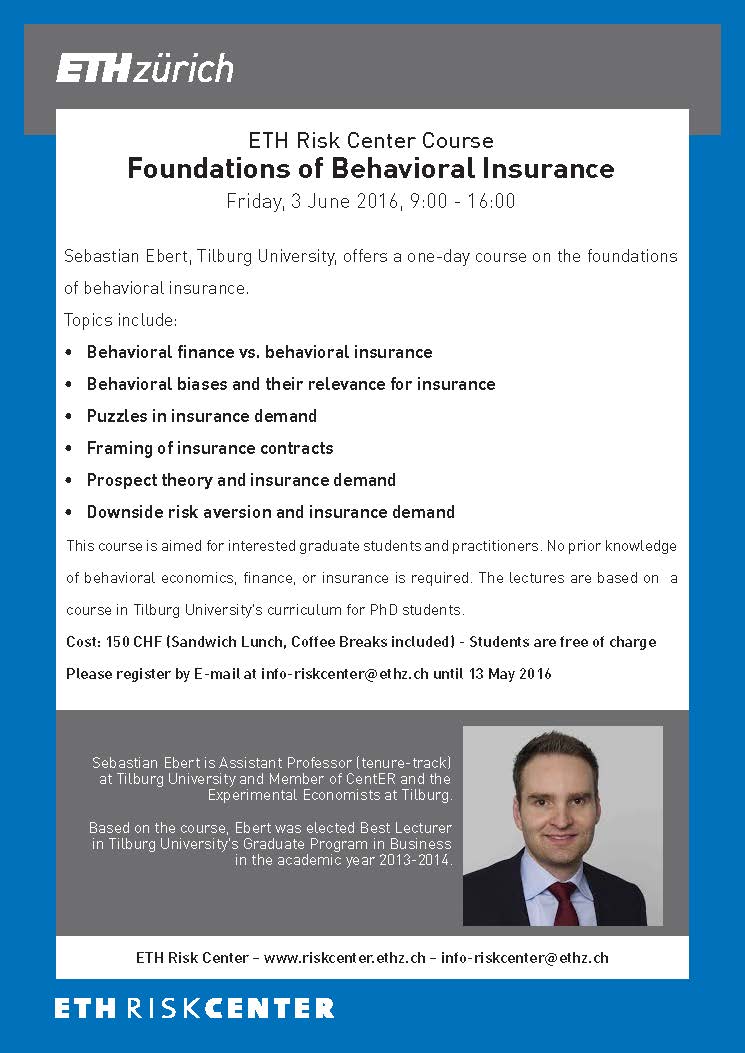Public Courses
A Systems Approach to Safety and Security
Prof. Nancy Leveson, MIT, USA
Wednesday, April 3, 2019, 9.00 – 17.00 hrs (Lecture room LEE E 308)
Thursday, April 4, 2019, 8.30 – 15.00 hrs (Lecture room LEE E 101)
Venue: ETH Zurich, Leonhardstrasse 2, 8006 Zurich
Full program Download here
Workshop external page Slides Day 1 / Workshop external page Slides Day 2
external page Summary CAST-Final
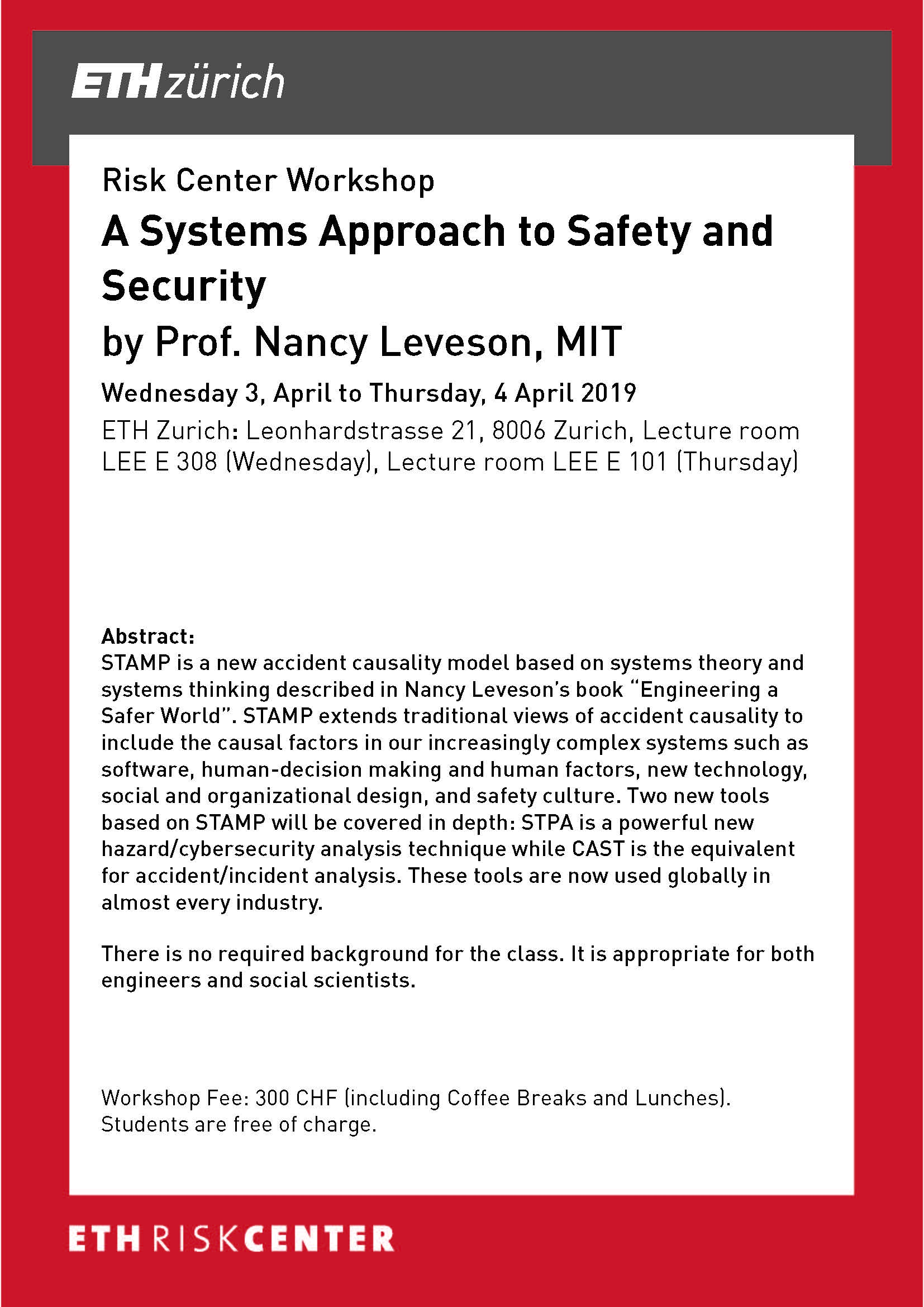
Preferences over Random Variables: Let's talk about Continuity
Prof. Alexander Zimper, University of Pretoria
Thursday, May 24, 2018, 13.30 – 17.30 hrs.
Venue: ETH Zurich, Leonhardstrasse 21. Room: LEE E101
Please find topics and more information in the announcement below
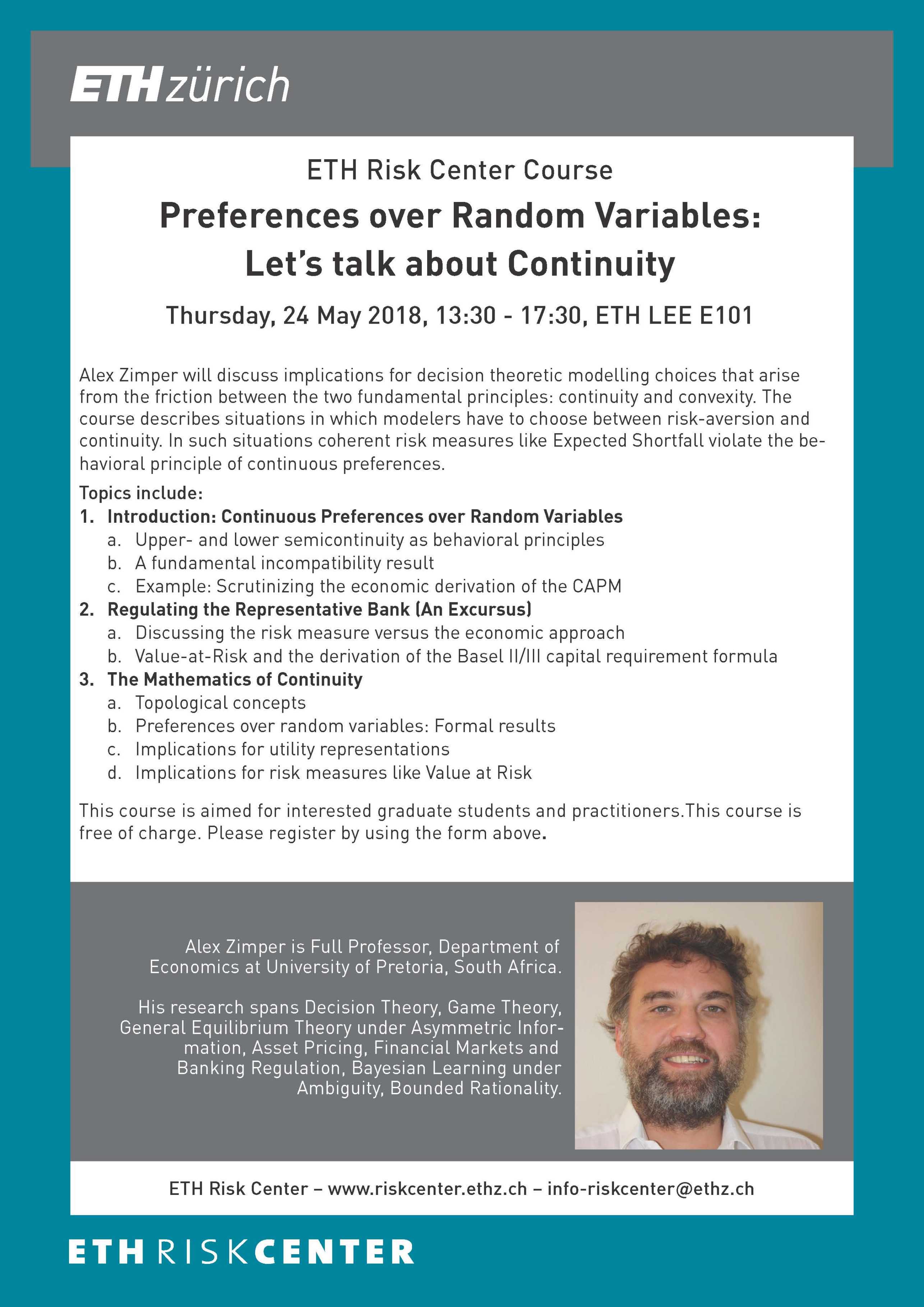
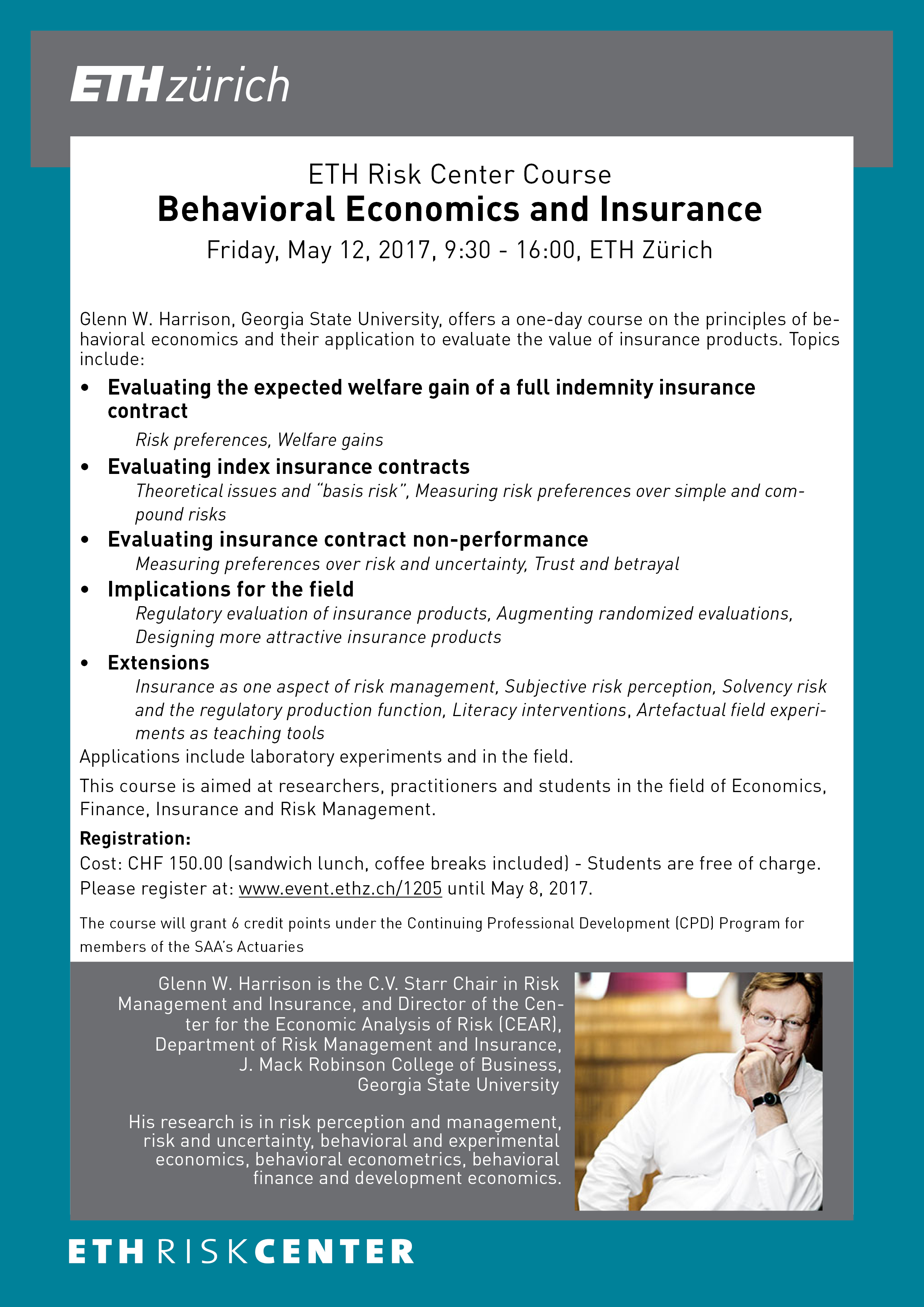
Details and Registration:
Date: 12 March 2017, 9.30 - 16.00 hrs.
Venue: ETH Zurich, Rämistrasse 101, HG D 16.2
Slides Download here (ZIP, 4.3 MB)
Cost: CHF 150.00 (sandwich lunch, coffee breaks included) - Students are free of charge.
Credit Points: The course will grant 6 credit points under the Continuing Professional Development (CPD) Programme for members of the SAA's Actuaries section.
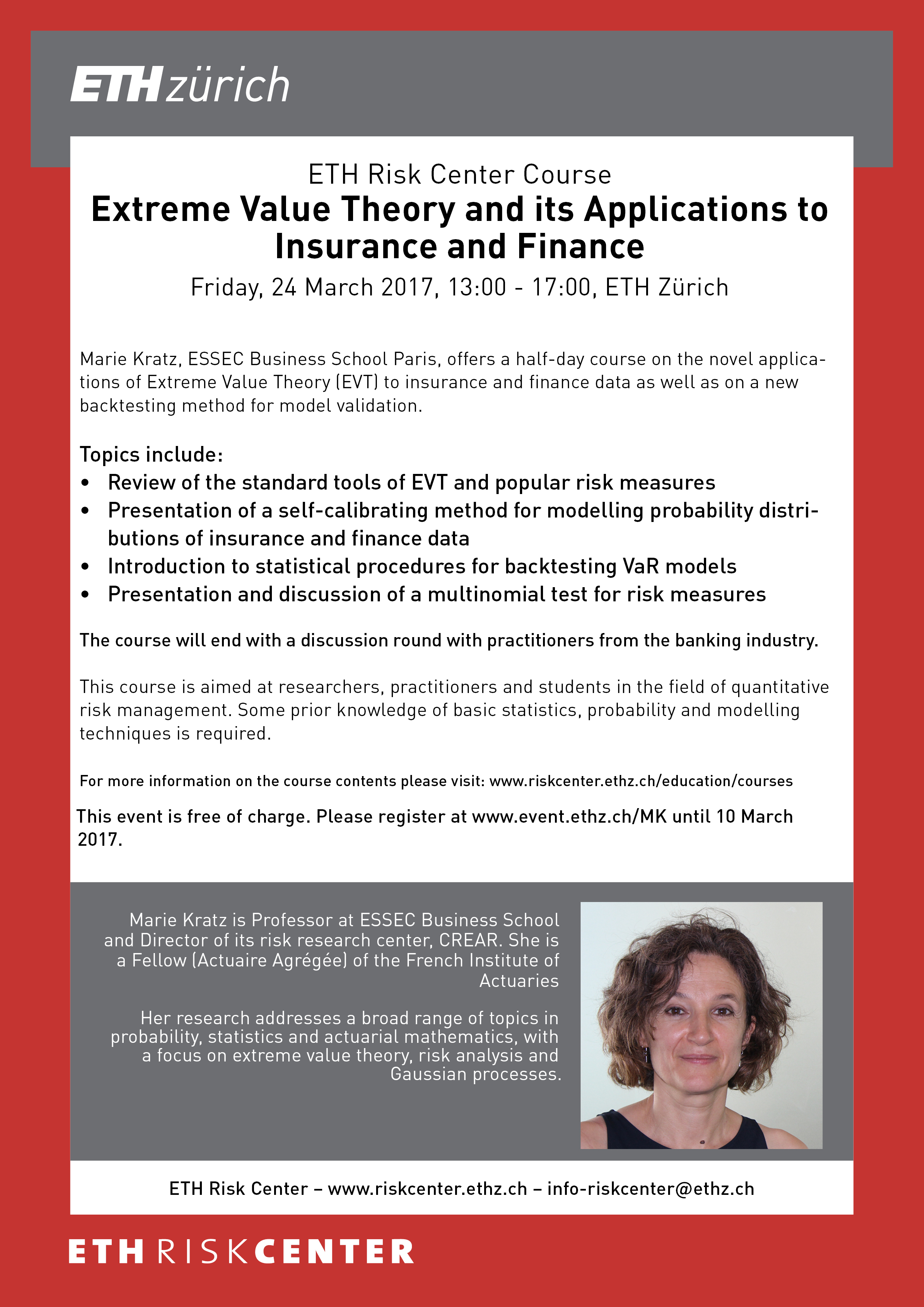
Details and Registration:
Date: 24 March 2017, 13.00 - 17.00 hrs.
Venue: ETH Zurich, Rämistrasse 101, HG E 3
Slides of the presentation Download here (PDF, 2.2 MB).
Credit Points: The course will grant 3 credit points under the Continuing Professional Development (CPD) Programme for members of the SAA's Actuaries section.
Abstract of the Course:
After a brief review of the standard tools of Extreme Value Theory, we will introduce two new methods that find important applications in risk management.
One proposes a self-calibrating method for heavy-tailed modeling, a study developed with N. Debbabi and M. Mboup (2016). One of the main issues in the statistical literature of extremes concerns the tail index estimation, closely linked to the determination of a threshold above which a Generalized Pareto Distribution (GPD) can be fitted. Approaches to this estimation may be classified into two classes, one using standard Peak Over Threshold (POT) methods, in which the threshold to estimate the tail is chosen graphically according to the problem, the other suggesting self-calibrating methods, where the threshold is algorithmically determined. Our approach belongs to this second class proposing a hybrid distribution for heavy tailed data modeling, which links a normal (or lognormal) distribution to a GPD via an exponential distribution that bridges the gap between mean and asymptotic behaviors. A new unsupervised algorithm is then developed for estimating the parameters of this model. The effectiveness of our self-calibrating method is studied in terms of goodness-of-fit on simulated data, and compared with other more standard EVT approaches.
The second topic we will tackle concerns the model validation and presents an implicit backtest for Expected Shortfall via a simple multinomial approach. It is a study developed with Y. Lok and A. McNeil (2016). Replacing Value-at-Risk (VaR) by Expected Shortfall (ES) in Basel 3 is under current discussion, as ES is in general a better risk measure than VaR, more reliable tool for risk management. Hence the question of providing a backtest for ES, as handy in practice as the popular binomial backtest based on a violation process, used for the VaR. It is what we propose in this study. Following the idea by Emmer et al. of considering an empirical approach that consists in replacing ES by a set of a small number of quantiles for the backtesting, comes the natural proposition of a simple multinomial approach to backtest ES. It turns out to give reasonable results, certainly much better than with the binomial backtest, helping to distinguish between models.
Venue: ETH main building, Rämistrasse 101, Zurich. Lecture room HG D 16.2.
